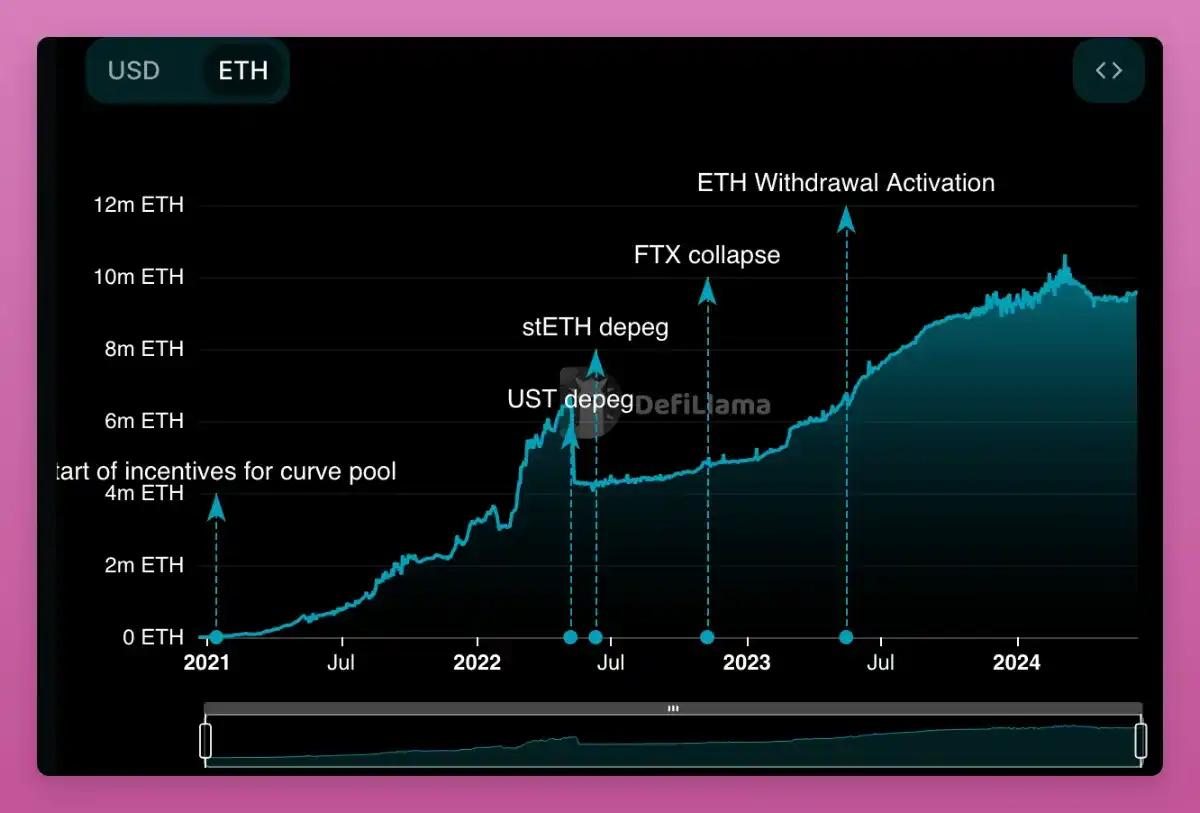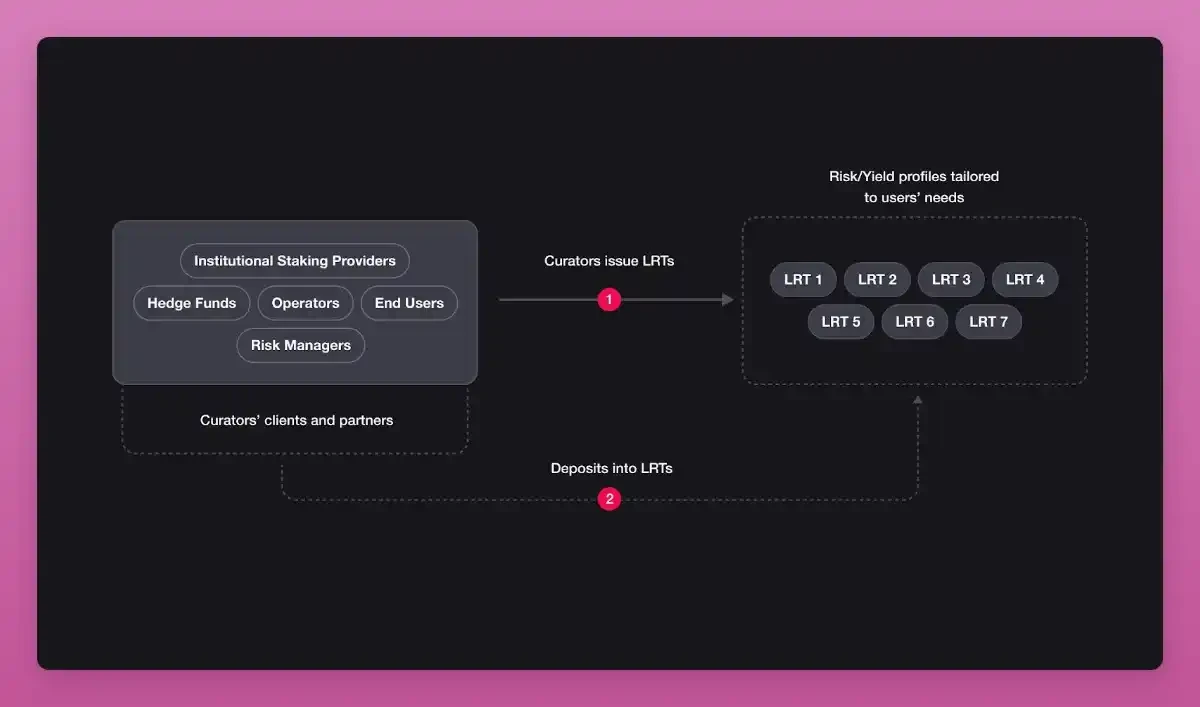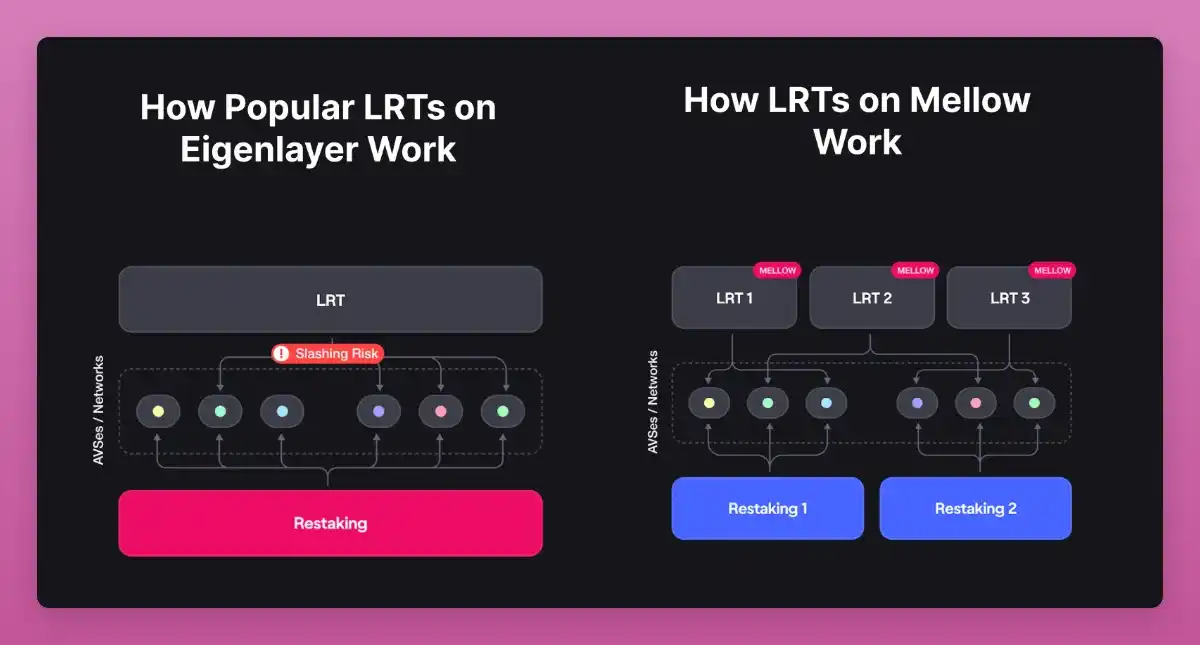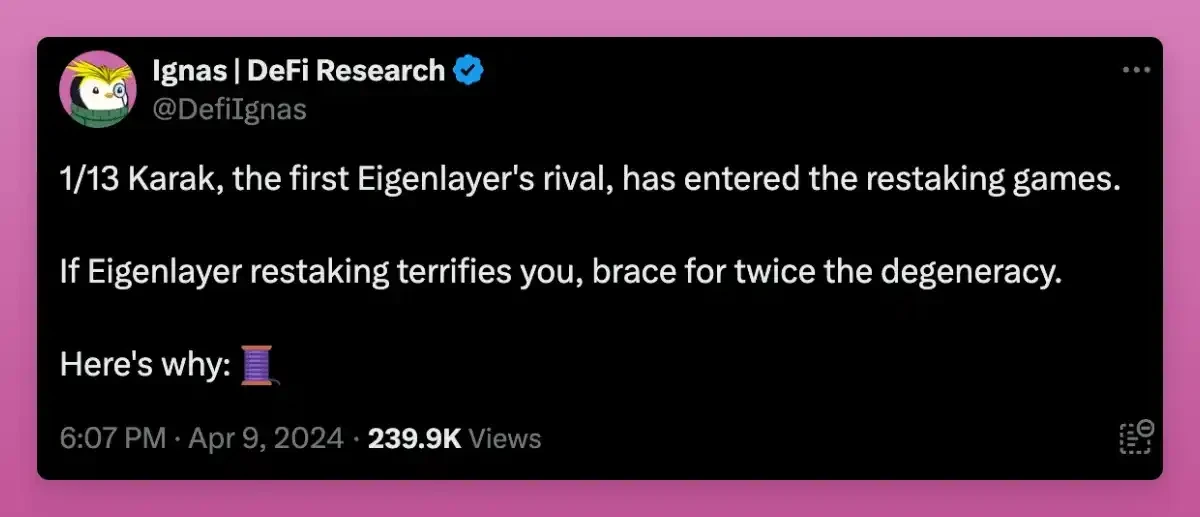Original title: The Restaking Wars: Eigenlayer vs Symbiotic
Original author: Ignas, DeFi researcher
Original translation: Ismay, BlockBeats
I was originally writing a blog post this week about emerging trends in crypto, but had to quickly pivot to focus on restaking.
The reason is that Symbiotic, Eigenlayers biggest competitor, has just been launched, and the deposit limit has almost reached $200 million in one day. Emerging trends can be watched later, but high-yield farm opportunities cannot be missed.
In addition to Karak, we now have three restaking protocols. So what exactly is going on, how are they different, and how should we respond?
The motivation behind Symbiotic
The hot gossip circulating in the market is that Paradigm had approached Eigenlayer co-founder Sreeram Kannan for investment, but Kannan chose Paradigm competitor Andreessen Horowitz (a16z), which led the $100 million Series B round.
Since then, Eigenlayer has grown to become the second largest DeFi protocol with a TVL of $18.8 billion, with only Lido being larger at $33.5 billion. EIGEN tokens are not yet transferable, but the FDV has reached $13.36 billion.
Considering that Eigenlayer is valued at $500 million FDV in March 2023, this amounts to a 25x increase in paper earnings.
No wonder Paradigm was unhappy. In response, Paradigm funded Symbiotic to become a direct competitor to Eigenlayer. Symbiotic received $5.8 million in seed funding from Paradigm and Cyber Fund. It is not yet known what its valuation is.
The rivalry between Paradigm and a16z is well known (and a running joke), but there’s a second part to the story.
Symbiotics second major investor, Cyber Fund, was founded by Lido co-founders Konstantin Lomashuk and Vasiliy Shapovalov.
“People associated with Lido see Eigenlayer’s re-staking approach as a potential threat to its dominance,” Coindesk reported in May.
Lido missed the trend of the LRT token, and in fact, the TVL of stETH has stagnated and decreased by 10% in the past three months. Meanwhile, EtherFi and Renzo have seen a surge in inflows, reaching $6.2 billion and $3 billion in TVL, respectively.
Restaking with LRT is particularly attractive as it offers higher yields, although currently much of the yield is actually points farming.
To consolidate Lido’s position, Lido DAO launched the “Lido Alliance”, whose primary mission is to develop a permissionless, decentralized re-staking ecosystem.
“…given the rapid rise of the re-staking market and other factors. In response to some of his calls, we propose the following framework to support the emergence of an ecosystem around stETH while keeping the protocol intact.”
By the way, one of the strategic priorities listed is to reiterate that stETH is an LST, rather than becoming an LRT.
This is awesome because we get more tokens and have more opportunities to farm airdrops.
Just one month after initial discussions, key alliance member Mellow launched LRT deposits on Symbiotic backed by stETH deposits.
But before we dive into the unique features and farm opportunities of Mellow LRT, let’s take a step back and discuss how Symbiotic differs from Eigenlayer.
Symbiotic vs. Eigenlayer
Symbiotic: Permissionless and Modular
Symbiotic features a permissionless and modular design, providing more flexibility and control. Its main features are as follows:
Multi-asset support: Symbiotic allows direct deposits of any ERC-20 token, including Lido’s stETH, cbETH… This makes Symbiotic more diversified than Eigenlayer, which mainly focuses on ETH and its derivatives (as far as I know, Eigenlayer may also support other assets in the future).
Customizable parameters: Networks using Symbiotic can choose their collateral assets, node operators, rewards, and penalty mechanisms. This modular design gives networks the freedom to adjust their security settings based on their specific needs.
Immutable core contracts: Symbiotic’s core contracts are non-upgradeable (similar to Uniswap), which reduces governance risks and potential points of failure. Symbiotic can continue to operate even if the team disappears.
Permissionless design: By allowing any decentralized application to integrate without approval, Symbiotic provides a more open and decentralized ecosystem.
Misha Putiatin, co-founder and CEO of Symbiotic, said in an interview with Blockworks, “Symbiotic means ‘avoid competition like avoiding fire, and be as selfless and as non-judgmental as possible.’”
Misha also told Blockworks that “Symbiotic will not compete with other market participants — and therefore will not provide native staking, aggregation, or data availability services.”
When dApps launch, they typically need to manage their own security model. However, the permissionless, modular, and flexible Symbiotic design allows anyone to protect their network using shared security.
“The goal of our project is to change the narrative — you don’t have to launch locally — it will be safer and easier for you to launch on us, on shared security,” Misha told Blockworks.
In practice, this means that crypto protocols can enable native staking for their native tokens to increase network security. For example, Ethena has partnered with Symbiotic to enable cross-chain security for USDe by staking ENA.
Ethena is integrating Symbiotic with LayerZero’s Decentralized Verification Network (DVN) framework to enable cross-chain security for Ethena assets like $USDe, backed by staked $ENA. This is the first of several parts of their infrastructure and systems that will leverage staked $ENA, – Symbiotic blog post.
Other use cases include cross-chain oracles, threshold networks, MEV infrastructure, interoperability, shared sorters, and more.
Symbiotic launched on June 11th and the deposit cap for stETH was reached within 24 hours. Oh, and did I mention the depositor points?!
Eigenlayer: Management and integration methods
Eigenlayer takes a more managed and integrated approach, focusing on leveraging the security of Ethereum ETH stakers to support a variety of dApps (AVS):
Single asset focus: Eigenlayer mainly supports ETH and its derivatives. This focus may limit its flexibility, compared to Symbiotic which offers broader multi-asset support. However, more assets can be added.
Centralized management: Eigenlayer manages the delegation of staked ETH to node operators, who then verify various AVS. This centralized management helps simplify operations, but can lead to bundling risks, making it more difficult to accurately assess the risks of individual services.
You can read how it works in my previous blog post .
Dynamic Market: Eigenlayer provides a decentralized trustless market that allows developers to launch new protocols and applications using the pooled security of ETH. Risk is shared among depositors in the pool.
Slashing and Governance: Eigenlayer’s management approach includes specific governance mechanisms for handling slashing and rewards, which may provide less flexibility.
To be honest, Eigenlayer is an extremely complex protocol, and the risks and overall operation are beyond my understanding, haha. I had to compile criticisms from various sources to write this part. One of them is from Cyber Fund itself.
I am not biased towards either side, and I believe the comparison between Symbiotic and Eigenlayer will spark heated discussions among DeFi geeks.
Understanding the Mellow Protocol: Modular LRTs
What surprised me most after Symbiotic went live was the immediate launch of LRTs on the Mellow protocol. As a member of the Lido Alliance, Mellow benefits from Lido’s marketing, integration support, and liquidity onboarding.
As part of the deal, Mellow will reward Lido with 100 million MLW tokens (10% of the total supply), which will be locked in a Lido Alliance legal entity after the TGE.
These tokens will be subject to the same vesting and cliff period terms as the team tokens: a 12-month cliff period after the TGE, followed by a 30-month vesting period after the cliff period (terms modified based on feedback).
Two other benefits are mentioned in the coalition proposal:
“Lido’s node operators can launch their own composable LRTs and take control of the risk management process by choosing an AVS that fits their needs, rather than facing the imposition of an LRT or re-collateralization protocol.”
“This will help expand Lido’s geographic and technical decentralization efforts beyond Ethereum validation.”
It will take time for the impact of the collaboration to show, but LDO is up 9% in 24 hours. That’s pretty impressive!
Interestingly, before the Lido collaboration tweet was released, the $42 million cap on one of the four LRT pools had already been reached.
Anyway, if you are familiar with Eigenlayers LRTs such as Etherfi and Renzo, you will know that depositing funds in Mellow is doubly interesting: you get points from both Symbiotic and Mellow.
But Mellow and Eigenlayers LRTs are different…
What problems does Mellow solve for LRTs?
The Mellow protocol allows anyone to deploy LRT. Hedge funds, staking service providers (like Lido!), and even me can (in theory).
This also means a sharp increase in the amount of LRTs, which hurts their liquidity and complicates their integration in DeFi protocols.
However, it also has some advantages:
Diverse Risk Profiles: Current LRTs typically force users to accept a uniform risk profile. Mellow allows for multiple risk adjustment models, enabling users to choose their preferred risk exposure.
Modular Infrastructure: Mellow’s modular design allows shared security networks to request specific assets and configurations. Risk curators can create highly customized LRTs based on their needs.
Smart Contract Risk: By allowing modular risk management, Mellow reduces the risk of errors in smart contracts and shared security network logic, providing a safer environment for re-stakeholders.
Operator Centralization: Mellow decentralizes operator selection decisions, preventing centralization and ensuring a balanced and decentralized operator ecosystem.
LRT Cycle Risk: Mellow’s design addresses the risk of liquidity crunch due to withdrawal closures. Currently, withdrawals take 24 hours.
Interestingly, Mellow specifically mentioned that they could launch LRT on top of any staking protocol like Symbiotic, Eigenlayer, Karak, or Nektar. But I would be very surprised to see Mellow working directly with Eigenlayer.
However, I would not be surprised to see the current Eigenlayer LRT protocol work with Symbiotic or Mellow. In fact, Coindesk reported that a source close to Renzo and Symbiotic mentioned that Renzo was already discussing integration with Symbiotic a month ago.
Finally, the cool thing about permissionless Mellow vaults is that we could potentially have LRTs for DeFi tokens. Imagine an ENA LRT token that is liquid re-collateralized ENA on Symbiotic, used to secure USDe cross-chain.
This cycle doesn’t see much innovation in token economics, but Symbiotic may make holding DeFi governance tokens attractive again.
DeFi Degen’s Re-staking War Strategy
As of this writing, there are four LRT vaults on Mellow, managed by four unique curators. The deposit limit is about to be reached.
The timing of the Symbiotic and Mellow LRT launches is perfect: the EtherFi S 2 points campaign ends on June 30th, Renzo S 2 is in progress, and the Swell airdrop should come soon when withdrawals are enabled.
I almost worry about what to do with my ETH after the LRT farm airdrop expires. Thanks to the games of VCs and big players, the airdrop farmers will also eat well.
The game is pretty simple at the moment: deposit Symbiotic to earn points, or increase the risk level and farm directly on Mellow.
Please note that since Symbiotics stETH deposit limit has been reached, you will no longer be able to earn Symbiotic points, but will receive 1.5 times the Mellow points.
The airdrop farm game may be similar to Eigenlayer’s gameplay: Mellow LRTs will be integrated into DeFi, and we will see leveraged farms on Pendle, as well as farms on multiple lending protocols.
But I think Symbiotic tokens will probably be listed before EIGEN is tradable.
In an interview with Blockworks, Putiatin said the mainnet could go live “as early as late summer for some networks.” Does this mean the tokens will also go live at the same time?
Stealing the re-staking heat from Eigenlayer could be a smart move, especially if the market turns bullish soon, given Symbiotic’s aggressive partnership strategy.
The two partnerships that shocked me the most were: The Blockless and Hyperlane. Both protocols initially partnered with Eigenlayer as shared security AVSs, but are they changing alliances?
Maybe Symbiotic is promising more support and token distribution? I need more answers!
Regardless, these restaking wars are good for us airdrop farmers as it provides more opportunities and may prompt Eigenlayer to launch tokens earlier than expected.
Symbiotic is still in its early stages but early deposit inflows are very positive. I am currently farming on Symbiotic and Mellow but plan to migrate to Pendle YTs once the strategy opens.
I believe Pendle’s Symbiotic YT token expiration date will provide us with more insights into the Symbiotic TGE timeline.
Last point: Karak
You thought I forgot about it, didnt you?
Karak is a hybrid. It is similar to Eigenlayer, but instead of using AVSs, it calls them Distributed Security Services (DSS).
Karak also launched its own Layer 2 (called K2) for risk management and sandboxing of DSSes. However, it is more like a testnet than a real L2.
But Karak managed to attract over $1 billion in TVL! Why? There are two main reasons:
Karak supports Eigenlayer LRTs: Therefore, farm users deposit LRTs and earn points from Eigenlayer, LRT and Karak at the same time.
Karak has successfully raised over $48 million: Investors include Coinbase Ventures, Pantera Capital and Lightspeed Ventures. The support of well-known investors is expected to bring high airdrops.
Learn more about Karak in my post below:
Since the April announcement, Karak has not announced any significant partnerships, notable LRT protocols launching on Karak, or any exclusive DSS/AVS partners.
I really want to see more aggressive development for Karak, as Symbiotic is catching up hard with Eigenlayer. Karak needs to pick up the pace.
This article is sourced from the internet: Eigenlayer vs Symbiotic, the re-staking war begins
At the BitcoinAsia conference in May, Merlin Chain founder Jeff delivered a speech titled From Bitcoin L1 to Merlin Chains Native Innovation, which explored in depth how Merlin Chains native innovation can empower the Bitcoin ecosystem. He reviewed the evolution of the Bitcoin ecosystem and explored in depth how Merlin Chains native innovation will promote the development of the Bitcoin ecosystem. The following is the full text of the speech, compiled based on the on-site recording. Before 2023, Bitcoin was always seen as digital gold for value storage, and no one was creating new concepts and applications around Bitcoin. But after the Ordinals craze in mid-2023, more and more people began to create NFT-related content on the Bitcoin network, issuing assets such as BRC-20, BRC-420, and ORC-20, and then Atomicals…

















